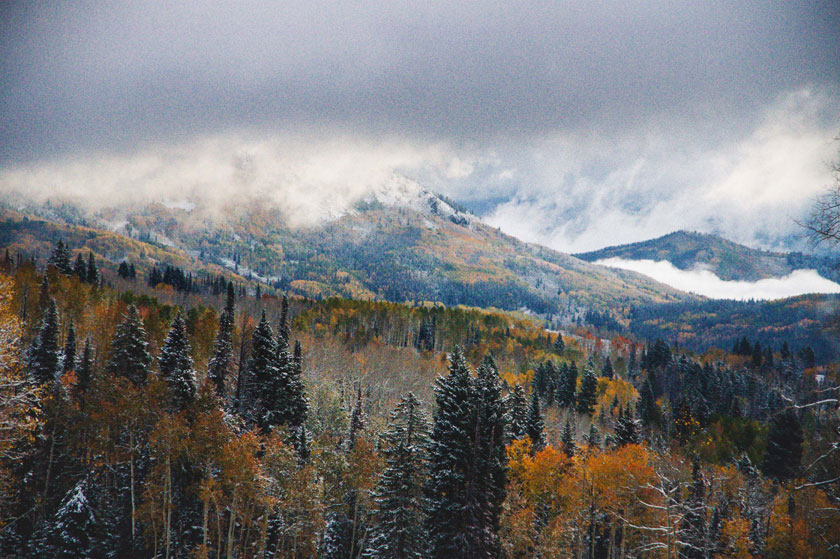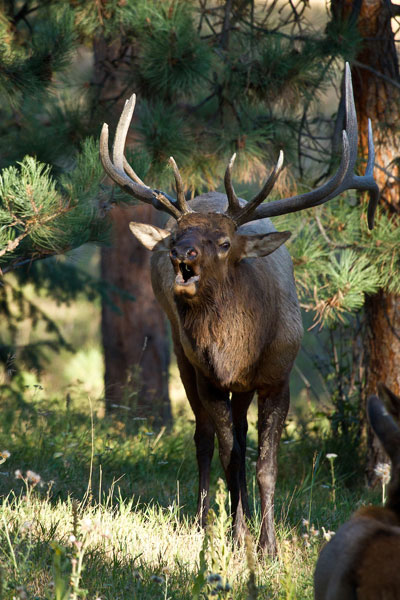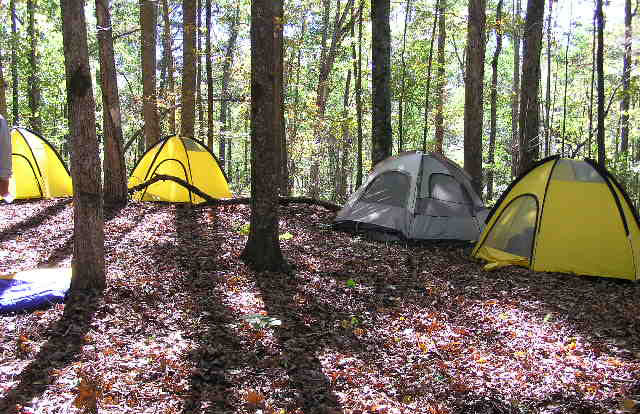Karl Badger of Salt Lake City, Utah, has guided elk hunters for 20 years and is a Mossy Oak Regional ProStaff Manager. Karl’s favorite type of elk hunt is packing in with horses and spending time in the wilderness. “I’m primarily a horse pack guide for elk and take my clients about 25 miles into where we’ll set up camp to start hunting elk.”

1. Be in Shape
Expect to be oxygen-deprived if you’re coming from the East or the South to hunt our mountains. But even so, you need to have your body in good condition. I explain to my hunters that they need to be in shape to hike at least six miles per day in rough terrain. They may want to get into a running routine before the hunt, lift weights and/or ride a bike. The better the physical condition you’re in, the better your odds will be to have a successful elk hunt. If you’re on a 10-day hunt, by days two or three, once your body becomes adjusted to the altitude, you may have days of hiking that aren’t so hard.
2. Stay Mentally Tough
Most people never consider this aspect of successful elk hunting, but often being mentally tough is the critical difference in success or failure. Whether you’re on a horse elk hunt trip or climbing mountains or hiking in the high country, you’ve got to bring a good attitude with you and decide that whatever is asked of you, you’ll try to do. Be strong enough in your mind that you can push past hurt when you need to do so. When you wake up in the morning, you’ve had a hard hike the day before, and you really don’t want to come out of your tent, you’ve got to push through, crawl out of that sleeping bag and be ready to go another day.
Sometimes late in the afternoon, we’ll have one more mountain to climb. You must be mentally tough, have a positive attitude and decide that you will do whatever is necessary to get to where the elk are to get a shot. You must understand that if you hunt hard one day, and you don’t even see an elk, that you must be ready the next morning. That may be the day you take the bull elk of your dreams. The other part of being mentally tough is to have fun while you’re going through this ordeal of hunting elk.
3. Take Care of Your Feet
You won’t go anywhere or do anything if you don’t have quality boots and good socks. I never go cheap with boots. I wear Zamberlan boots that are Italian boots, but there are other quality boots you can purchase. These boots are made and designated for mountaineering for serious backpackers and climbers. They’re easy to purchase. You can buy them from Sportsmen’s Warehouse in this country, which means you can try them on and have the best fit. I like these boots because they’re very lightweight, have good arch supports and are stout boots.
You need to match those boots with a quality pair of Merino wool socks. If you get a blister, your feet swell up on you or they begin to ache, and you can’t walk and hike to find your elk. We had one guy in elk camp two years ago who developed a blister on his heel the size of a quarter. He also didn’t come to elk camp with that mental toughness to push through the hurt. We patched up that blister with some moleskin. However, he didn’t want to go out and hunt, because he’d have to put on his boots. I realize blisters can be painful. Also, if your feet get wet, that will ruin your elk hunt. You need to have boots and socks that will keep your feet dry.
4. Know the Area Where You’ll Be Hunting

Plan to get out and do some scouting before your hunt starts. You may want to visit the area you intend to hunt during the summer months before your elk hunt takes place in the fall. Study maps to see where your camp will be, the terrain you’ll have to hike through, and where you expect to find the elk. If you’re a non-resident, hopefully you’ll have a guide or an outfitter who will do that scouting for you. Or, find a friend in that region who will help you get started and give you an idea of where to hunt. Then you’ll be familiar with the landmarks.
Also, before you go, learn the migration routes of the elk. Search for good wallows before an early-season hunt. Locate them on your maps, too. Today, so many maps are available in app form that you can pull up on your cell phone even when you don’t have cell phone coverage. Most Fish and Game Departments or Natural Resource state agencies will offer an app that you can get when you fill out your application for a tag, especially in the Western states where most of the elk are concentrated. Once you fill out your application online, there generally will be a map link that you can download on your cell phone. The worse-case scenario is you always can get a topographical map to look at the terrain where you’ll be hunting. OnX Maps, HuntData and www.mytopo.com are good places to get all kinds of maps that definitely will help you.
5. Remember Optics Are Important
You’ve got to be able to see the critters that you’ll be hunting from as far away as you possibly can. Have a quality pair of binoculars with you. I prefer 10x binoculars, but I also realize that everyone’s eyes are somewhat different. You need to pick a pair of binoculars through which you can see the best. When you go to a sporting-goods store to buy binoculars, look through several pairs to decide which ones you’ll purchase. However, with all the technology available today, I don’t think there’s a bad pair of binoculars or spotting scopes on the market today. Too, if you’re planning to hunt with a rifle, you need a rifle scope that you know can give you a clear, bright picture of the elk you want to take. You must be comfortable aiming and shooting that rifle at dusk and at dawn.
When I’m scouting for elk, I’ll often take my rifle and scope with no ammunition and go out to look at elk early and late to better be able to spot them in my scope. I think that knowing what animals look like in various lighting conditions is important to your success afield.
6. Be Proficient with Your Rifle or Your Bow
 If you’ll be hunting with a bow, you should have spent several months prior to your elk hunt shooting it. You need to be sure to have your sights set at the distances you may have to shoot. You need to be comfortable with your draw weight. If you’re shooting a rifle, go to the range and learn how far you can shoot accurately and comfortably before your trip. You must know that when you squeeze the trigger, and the target is in the center of your sight picture, that that’s exactly where the bullet will land. You don’t want to get out in the field, see your elk and try to push the limits of shooting accurately. Remember, shooting a bow and a rifle are fun. I believe a bowhunter should practice out to between 40-60 yards. Most archery elk hunts are held during the rut when the elk are being stupid. Generally then we can get those bull elk to within 40-60 yards or perhaps even closer.
If you’ll be hunting with a bow, you should have spent several months prior to your elk hunt shooting it. You need to be sure to have your sights set at the distances you may have to shoot. You need to be comfortable with your draw weight. If you’re shooting a rifle, go to the range and learn how far you can shoot accurately and comfortably before your trip. You must know that when you squeeze the trigger, and the target is in the center of your sight picture, that that’s exactly where the bullet will land. You don’t want to get out in the field, see your elk and try to push the limits of shooting accurately. Remember, shooting a bow and a rifle are fun. I believe a bowhunter should practice out to between 40-60 yards. Most archery elk hunts are held during the rut when the elk are being stupid. Generally then we can get those bull elk to within 40-60 yards or perhaps even closer.
We had an archery event out here in Utah, and some of the guys were bragging about being able to shoot their bows accurately out to 100 yards. They validated those brags by shooting accurately at that distance. However, realistically, I don’t think you should take a shot at more than 40-60 yards or even closer at an elk with a bow. The firearm hunter should be able to shoot accurately from 200-300 yards.
7. Know How to Dress Properly for an Elk Hunt
Your base layer is the most important layer of your hunting clothes when you’re pursuing elk. I’m a big fan of Merino wool for a base layer. You can buy different weights of Merino wool base layers, depending on how cold or warm the weather will be when you’re hunting elk. I like Merino wool because of its great wicking qualities. But what I mainly like about Merino wool is odor control. Even if you’ve been sweating in that base layer for three days, Merino wool tends to keep the hunter’s odor fairly neutral.
Next I put a quality insulation layer on top of the base layer. Once more, depending on the weather, that clothing needs to keep you dry and comfortable. In the early season, you may want to consider wearing a lightweight rain suit that can be easily folded up and put in your pack. If you’re hunting in the late season, you may want to wear wool pants and a warm jacket that’s also waterproof and windproof. But your most important layer is that base layer.
Most elk bowhunts begin in August. I suggest wearing lightweight Merino wool then because you can wear that like a t-shirt, and it will pull moisture off your body and keep you cool. At the end of September or the first part of October, I’d go to a mid-weight base Merino layer, as the temperatures drop down to the 30s, 40s or 50s during the day. You definitely need a rain jacket and pants in your pack then. Most elk hunting is spot-and-stalk, so you’ll be doing a lot of aerobic activity. For that reason, you don’t want to be too warm. However, you do want to have extra clothes in your pack, so if the weather changes quickly, and some rain or snow occur, then you have that outer layer to keep you dry.
8. Stay Hydrated
No matter how warm or cold the weather is on your elk hunt, you’ve got to keep yourself hydrated. The secret to staying hydrated is to take some type of water filter with you. Having the ability to purify water is very important when you’re hiking in the mountains. You won’t always have pristine water to drink there. If you don’t remain hydrated, you’ll cramp up and have a miserable hunt. One of the relatively new filtration systems is the Straw Filter, which I like because it’s only about six inches long and fits in your shirt pocket. You can lay down beside a stream and suck all the good, clean water you want out of that stream.
I’ve seen people load up on water in containers and put them in their backpacks. However, after you’ve been hiking and climbing for a while, that water becomes very heavy. But in the mountains when you’re hunting elk, there’s most always a water source – melting snow, a stream or a creek. Besides a purification straw or some kind of purification system, do take an empty plastic bottle with you that you can fill up. Some filtering systems state that they’re good for 1,000 usages. Companies are manufacturing more of these filtering systems, especially for third world countries. You also can bring powdered sports drinks to put in your water to replenish electrolytes you’ve lost from climbing and sweating.
9. Bring Some Type of Shelter and Sleeping Gear

Take a shelter with you in your backpack that you can roll up, like a one-man tent. You may get too far from camp at times while hunting elk to return in one day. You may need a shelter to get into, especially if rain or snow is falling. Also if you get on a herd of elk, you may want to spend the night out near the elk to enable you to get up in the morning and have a much better chance to take an elk than if you have to hike back to camp and hike back to the elk’s location the next morning. Too, plan to have good sleeping gear to use when you return to camp. Usually you’ll put in a hard day of walking and climbing each day when elk hunting. Getting a restful night of sleep will play an important role on how you feel when you wake up, and how well you’ll perform the next day. When you get to camp, you want to eat well and sleep well.
10. Listen to Your Guide or Outfitter, and Learn to Blow a Cow Elk Call
Your guide or outfitter’s job is not only to get you to a place where you can see and possibly take an elk. He’s also responsible for making sure that you’re not so tired and worn out when you reach the elk that you can’t take a shot. Most guides and outfitters have been on numerous elk hunts. They want to help you become successful and want to make sure you have an enjoyable experience. I suggest that anyone going elk hunting should have a cow elk call and learn how to blow it before they arrive at elk camp. Then no matter what happens during the hunt, you’ll have a device – the cow elk call – to make a bull elk come to you. For instance, you may get separated from your guide or outfitter and see a bull. By simply giving a few cow calls you may be able to pull that bull to you.
Once you land an elk, you’ll definitely want to make some great meals from the meat. Try “Miz Denise’s Outdoor Cooking: More Than 35 Recipes for Elk and Mule Deer,” which can be downloaded for free.
Karl Badger’s list of items needed for a successful 10-day wilderness elk hunt when you pack in on horses:
- Paniers for gear and game
- Wall Tent
- Collapsible Stoves for heating and cooking
- Collapsible table & chairs
- Wash basin
- Cots
- Lights
- Propane
- Coolers
- Saw
- Shovel
- Ax
- Electric Fence
- First Aid Kits for Horses and People
- Portable Shower
- Tarp to keep saddles dry
- Riding boots/packers
- Chaps
- Tough Jacket
- Slicker/Rain Gear
- Good gloves
- Saddle Bag
- Scabbard
- Grain
- SAT Phone
- Brimmed Hat
- Water Purifier



























